Cooking Dishes

How can I reduce the amount of cleaning required after cooking a meal ?
Cleaning up after cooking can often feel like a chore, especially after spending time preparing a delicious meal. However, there are several strategies you can implement to minimize the mess and make cleaning up quicker and easier. Here's a detailed guide on how to reduce the amount of cleaning required after cooking: Before You Start Cooking - Plan Ahead: Decide what you will cook and read through the recipe completely. This helps you prepare all necessary ingredients and tools beforehand, reducing the need to clean up multiple times during cooking. Prep Your Workspace: Clear your countertops and clean them thoroughly before you start cooking. A clean work area means less mess to clean up later. Use Non-stick Cookware: Non-stick pans and bakeware require less oil or butter, making them easier to clean with just a quick wipe down. Set Up a Spill Station: Place a sheet of foil under or beside the stove to catch drips and spills, which can be easily thrown away after cooking. While You Are Cooking - Clean as You Go: Wash utensils and dishes immediately after using them. This prevents food residue from drying up and becoming harder to clean. Use Covers on Pots and Pans: This reduces splatters and saves you from having to wipe down the stove and surrounding surfaces. Contain Small Messes: Use a small bowl to hold waste like vegetable peels or fish bones rather than letting them spread over the counter. After You Have Cooked - Soak Dishes: If you have dishes that are difficult to clean, fill them with hot water and a little detergent to soak while you eat. This makes them much easier to clean later. Wipe Down Appliances: Give your appliances like blenders, mixers, or food processors a quick wipe down after use to remove any splatters. Clean the Stove Top and Countertops: Wipe these areas down with a damp cloth after cooking to avoid crusty buildup. General Tips for Efficiency - Simplify Your Recipes: Opting for simpler recipes can reduce the number of dishes used and ingredients prepared. Cook One-Pot Meals: One-pot meals like stews, casseroles, or stir-fries require fewer dishes to wash. Use Disposable Items Wisely: While not environmentally friendly, disposable items like baking paper, foil, or paper plates can be used strategically in situations where cleanup is particularly challenging.

What are the key ingredients in Indian cooking ?
Indian cuisine is known for its rich flavors and diverse dishes. The key ingredients that make Indian cooking unique are spices, herbs, ghee, lentils, rice, yogurt, nuts and seeds, and bread. These ingredients add flavor, color, and aroma to the dishes and create authentic and delicious Indian cuisine.
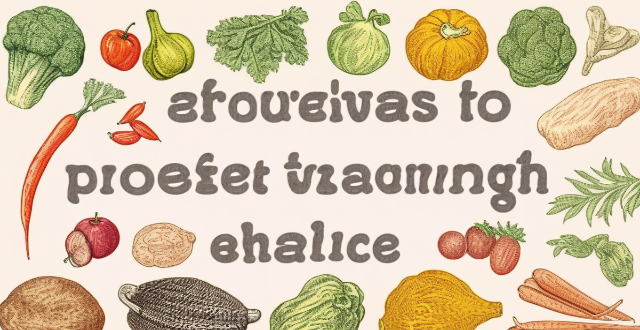
How can I streamline my cooking process to save time in the kitchen ?
The text provides tips and tricks for streamlining the cooking process, including planning ahead, using slow cookers or pressure cookers, prepping ingredients in advance, cooking once and eating multiple times, and cleaning as you go. These strategies aim to save time, reduce stress, promote healthy eating, and create a more enjoyable cooking experience by emphasizing preparation and organization.

Can you suggest popular dishes that showcase genuine Mexican flavors ?
Mexico's vibrant cuisine blends indigenous ingredients and Spanish cooking techniques. Popular dishes include a variety of tacos, enchiladas, chiles rellenos, quesadillas, authentic soups and broths, antojitos (snacks), street food, and beverages like horchata and agua fresca. These dishes showcase genuine Mexican flavors and the country's rich culinary heritage.

What are some ways to organize my kitchen to make cooking more efficient ?
Organizing your kitchen can greatly enhance the cooking experience by making it more efficient and enjoyable. Here are some strategies to consider: 1. Zone Cooking Areas 2. Declutter Regularly 3. Smart Storage Solutions 4. Group Like Items Together 5. Maximize Fridge and Freezer Space 6. Keep a Clean Sink 7. Lighting and Safety

What are some creative ways to use tofu in vegetarian cooking ?
Tofu is a versatile and nutritious ingredient that can be used in a variety of vegetarian dishes. Here are some creative ways to use tofu in your cooking: marinated and grilled tofu skewers, creamy tofu pasta sauce, tofu stir-fry, tofu bao buns, tofu scramble, and tofu dumplings. By incorporating these ideas into your vegetarian cooking, you can enjoy the many health benefits of tofu while exploring new flavors and textures in your meals.

How do I choose the right type of rice for Chinese cooking ?
When it comes to Chinese cooking, selecting the rightWhen it comes to Chinese cooking, selecting the right for achieving the desired texture and selecting the right type of rice is crucial for achieving the desired texture and flavor in your dishes. Consider the dish you are making, look for quality and freshness when purchasing rice, and don't forget to consider your personal preferences. By following these steps, you can choose the perfect type of rice for your Chinese cooking needs.

How can I make my favorite takeout dishes at home ?
Learn how to make your favorite takeout dishes at home with these tips and tricks. Gather all the necessary ingredients, including spices, proteins, vegetables, sauces, and rice or noodles. Equip yourself with sharp knives, mixing bowls, a wok or large pan, a steamer basket, and a rice cooker or pot. Master techniques such as marinating, stir-frying, steaming, and simmering. Don't rush the process; taste as you go; use fresh ingredients; experiment with spices; and practice makes perfect. Making your favorite takeout dishes at home is not only cost-effective but also allows you to customize them to your liking.

How can I make my favorite dishes vegetarian without sacrificing flavor ?
How to Make Your Favorite Dishes Vegetarian Without Sacrificing Flavor

What are the most kid-friendly home-cooked dishes ?
When it comes to cooking for kids, there are a few key things to keep in mind. First and foremost, children often have more sensitive taste buds than adults, so you'll want to avoid overly spicy or complex flavors. Secondly, many kids are picky eaters, so it's important to choose dishes that are both tasty and visually appealing. Finally, you'll want to make sure your dish is easy to eat – no small bones or tough meats that require a lot of chewing. Here are some of the most kid-friendly home-cooked dishes: 1\. Macaroni and Cheese 2\. Spaghetti and Meatballs 3\. Chicken Nuggets 4\. Quesadillas 5\. Pancakes or Waffles For breakfast or lunch, pancakes or waffles are always a hit with kids. You can make them from scratch using whole wheat flour and natural sweeteners like maple syrup or honey, or opt for store-bought mixes for convenience. Top with fresh fruit or whipped cream for an extra treat.

What are the basic techniques used in Chinese cooking ?
Chinese cuisine is known for its diverse flavors and cooking techniques. Here are some of the basic techniques used in Chinese cooking: 1. Stir-frying involves quickly frying small pieces of food in a wok or frying pan over high heat. The key to successful stir-frying is to use hot oil, fresh ingredients, and constant motion to prevent burning. 2. Steaming involves placing food in a steamer basket over boiling water and allowing it to cook through steam. This method is often used for dumplings, buns, fish, and vegetables. 3. Braising is a slow-cooking method that involves simmering meat or vegetables in liquid until they become tender and flavorful. This technique is often used for stews, soups, and braises. 4. Deep-frying involves submerging food in hot oil until it becomes crispy and golden brown. This technique is often used for fried rice, spring rolls, and tempura dishes. 5. Roasting involves cooking food in an oven at high temperatures until it becomes caramelized and tender. This technique is often used for roasted meats, vegetables, and baked goods like mooncakes and egg tarts.

How do I properly season my stir-fry dishes ?
When it comes to stir-fry dishes, seasoning is key to achieving that perfect balance of flavors. Here are some tips on how to properly season your stir-fry dishes: 1. Choose the right ingredients: Select fresh vegetables and proteins that will complement each other in terms of flavor and texture. 2. Use a variety of sauces and spices: Experiment with different sauces and spices to find the perfect combination for your dish. 3. Balance sweet, sour, salty, and spicy flavors: A good stir-fry should have a balance of these four flavors. 4. Cook in batches and use high heat: Cook your ingredients in batches over high heat to ensure even cooking and maximum flavor. 5. Taste and adjust as needed: Taste your stir-fry as you go and adjust the seasoning as needed.

What are the most common mistakes when cooking lobster at home ?
Cooking lobster at home can be delightful but common mistakes can affect taste and texture. Here are the most frequent errors: 1. **Not Preparing the Lobster Properly** - Underestimating the amount of salt needed for cooking water. - Ignoring the rinse before cooking to remove sand or grit. 2. **Overcooking the Lobster** - Cooking too long results in tough and chewy lobster. - Lack of temperature control during cooking. 3. **Choosing the Wrong Lobster** - Selecting poor quality or lethargic lobsters. - Neglecting size variation leading to uneven cooking times. 4. **Disregarding Safety Precautions** - Handling live lobsters incorrectly, risking injury. - Ignoring cross-contamination with other foods. 5. **Inadequate Flavoring** - Skipping seasoning, missing out on enhancing natural sweetness. - Overlooking garnishes that can improve the dining experience. 6. **Improper Storage and Handling** - Storing improperly if not cooked immediately. - Delaying cooking after purchase, risking the quality of the lobster. By avoiding these mistakes, you can ensure that your homemade lobster dishes are delicious and succulent.
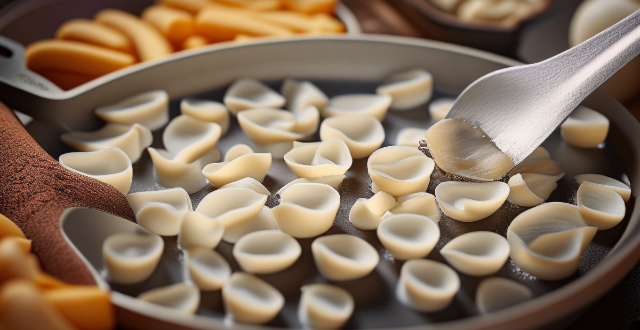
What are some popular Indian dishes ?
Popular Indian dishes include Biryani, Chole Bhature, Dal Makhani, Dosa, Samosa, Tandoori Chicken, and Vada Pav. These dishes showcase the rich flavors, diverse ingredients, and vibrant colors of Indian cuisine.
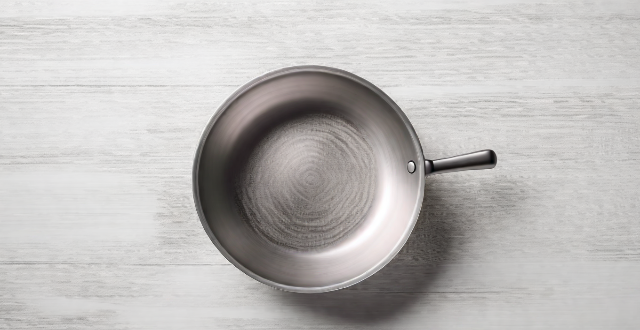
Can you explain the different types of cooking pans and their uses ?
The text provides a detailed overview of different types of cooking pans, highlighting their specific uses and features. It covers non-stick pans, cast iron pans, stainless steel pans, copper pans, aluminum pans, grill pans, skillets, saucepans, and griddle pans. Each type of pan is described in terms of its ideal uses and unique characteristics, such as heat conductivity, maintenance requirements, and compatibility with various cooking methods and materials. The summary emphasizes the importance of using the right pan for a given task to achieve optimal cooking results.

What are some traditional holiday dishes in your country ?
The text describes the traditional holiday dishes in the author's country. The dishes are an integral part of cultural heritage and are enjoyed by families and friends during festive celebrations. The author mentions four holidays: Thanksgiving, Christmas, Easter, and Halloween. For each holiday, the author lists popular dishes that are commonly served. The dishes include roasted turkey, mashed potatoes, gravy, green bean casserole, sweet potato casserole, cranberry sauce, pumpkin pie, roast beef or ham, cranberry relish, scrambled eggs, bacon, hash browns, pancakes, fruit salad, candy bars, caramel apples, popcorn balls, ghostly cupcakes, spiced cider, and hot chocolate. The author concludes by stating that these traditional holiday dishes are important for celebrating special occasions and bring families together.

Can you explain the concept of umami in Japanese cooking ?
Umami is one of the five basic tastes, along with sweet, sour, salty, and bitter. It is often described as a savory or meaty taste, and is commonly found in foods such as mushrooms, soy sauce, and aged cheeses. In Japanese cooking, umami is considered an essential flavor profile that adds depth and complexity to dishes. The science of umami is caused by the presence of glutamate, a type of amino acid, in food. When we eat foods that contain glutamate, it stimulates our taste buds and sends signals to our brain that register as a distinct taste. This taste is often associated with protein-rich foods like meat, fish, and vegetables. In Japanese cuisine, umami is used to enhance the flavors of dishes and create a more complex taste profile. Some common ingredients that are high in umami include miso (fermented soybean paste), dashi (Japanese broth made from dried fish and seaweed), soy sauce, dried shiitake mushrooms, and kombu (a type of seaweed). Umami is used in a variety of ways in Japanese cooking. For example, miso soup is made by mixing miso paste with dashi broth to create a savory soup that is often served as part of a traditional Japanese breakfast. Sushi combines vinegared rice, fresh fish, and soy sauce to create a perfect balance of flavors that includes umami. Ramen noodles use a broth made with chicken or pork bones, which are rich in umami. Teppanyaki involves grilling meat and vegetables on a hot plate, which helps to release their natural umami flavors. In conclusion, umami is an important flavor profile in Japanese cooking that adds depth and complexity to dishes. By using ingredients that are high in glutamate, chefs can create dishes that are both delicious and satisfying.
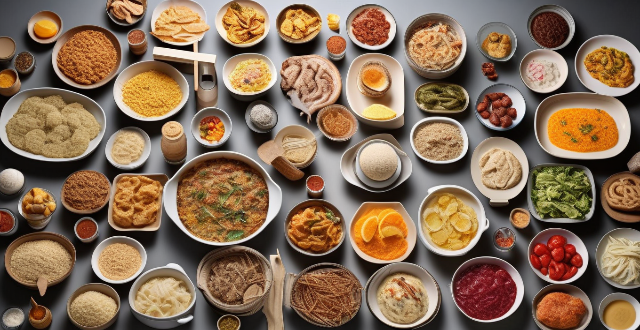
What are some unique street food dishes from around the world ?
This article provides an overview of various unique street food dishes from different parts of the world. It highlights dishes such as Poutine from Canada, Ceviche from Peru, Satay from Indonesia, Falafel from the Middle East, and Jalebi from India. The article describes each dish's key ingredients and characteristics, highlighting their cultural significance and culinary traditions.
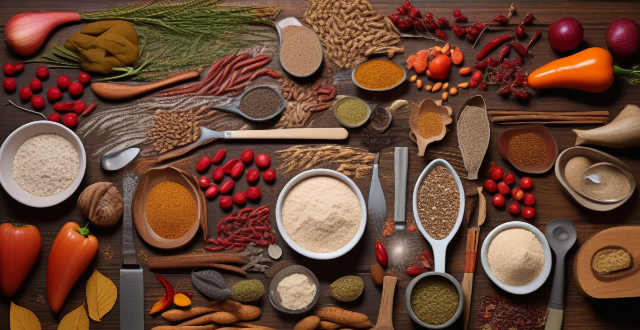
What is the significance of spices in Indian cooking ?
The significance of spices in Indian cooking is multifaceted, encompassing flavor enhancement, cultural traditions, and medicinal benefits. Key spices like turmeric, cumin, coriander, mustard seeds, fenugreek, red chili powder, garam masala, curry leaves, asafoetida, and tamarind contribute to the complex flavor profiles characteristic of Indian cuisine. These spices are used through techniques such as tempering, grinding, and roasting to create a balance of tastes and visual appeal. Historically, spices were valuable commodities in trade and are integral to traditional medicine and religious practices. Regional variations in spice use reflect India's diverse geography and cultural heritage. Understanding the nuances of spice usage allows for a deeper appreciation of the artistry behind Indian dishes.

What are the best techniques for cooking seafood ?
The article provides a summary of the best techniques for cooking seafood, which include poaching, grilling, steaming, and baking. Poaching is a gentle method of cooking seafood in a flavorful liquid such as water, broth or wine. Grilling is ideal for firm-fleshed fish like salmon or swordfish and adds flavor and texture to seafood. Steaming is a healthy way to cook seafood without adding extra fat and works well for fish fillets or shellfish like clams or mussels. Baking is a dry heat method that works well for thicker cuts of fish like cod or haddock. The article emphasizes the importance of paying attention to timing and temperature to avoid overcooking seafood.

How can I use kitchen appliances to save time while cooking ?
Using kitchen appliances like food processors, slow cookUsing kitchen appliances like food processors, slow cookers, rice cookers, slow cookers, electric pressure cookers, rice cookers, and stand mixers can significantly save time in meal preparation. These appliances offer features such as chopping, grinding, making dough, cooking at different heat settings, and precise mixing, allowing for efficient and convenient cooking experiences.

How does proper cooking and baking contribute to food safety ?
Food safety is crucial for maintaining public health and preventing illnesses. Proper cooking and baking are vital components of food safety, as they can destroy harmful microorganisms that may contaminate raw ingredients. High temperatures during cooking and baking kill most bacteria, reduce viruses, and eliminate parasites. Additionally, proper cooking practices prevent cross-contamination by using separate utensils and cutting boards for different types of food. To ensure food safety during cooking and baking, it's essential to use a food thermometer to check the internal temperature of cooked foods, follow recipes and time guides, keep work surfaces and equipment clean, store raw and cooked foods separately, avoid overcrowding pans, and refrigerate leftovers promptly. By adopting these best practices, you can significantly minimize the risk of foodborne illnesses and enjoy safe, delicious meals.
![What are some must-try dishes in [insert city/country] ?](/imgs/2f8b31ee-f62a-46e3-8828-37a4af062f9b.png)
What are some must-try dishes in [insert city/country] ?
Must-Try Dishes in [Insert City/Country]: A Culinary Journey When exploring the culinary delights of a new city or country, it's always exciting to try local dishes that showcase the unique flavors and ingredients of the region. In this article, we will delve into some must-try dishes in [insert city/country]. The first dish on our list is [dish name], known for its rich and flavorful taste. It typically consists of [ingredients/preparation method] and is a perfect representation of the local cuisine, offering a blend of traditional spices and fresh ingredients. Next up is the popular dish [dish name], made with [ingredients/preparation method]. This dish is not only delicious but also visually appealing, making it a feast for both your taste buds and eyes. Another unique dish found in [insert city/country] is [dish name], characterized by its [ingredients/preparation method]. This dish offers a unique twist on traditional [insert city/country] cuisine, combining familiar flavors with unexpected ingredients. Last but not least is the beloved dish [dish name], featuring [ingredients/preparation method]. This dish is a true representation of [insert city/country]'s street food culture, offering a quick and tasty snack for locals and tourists alike. In conclusion, [insert city/country] offers a wide variety of must-try dishes that cater to different tastes and preferences. From traditional staples to unique twists on classic recipes, there's something for everyone to enjoy. So next time you find yourself in [insert city/country], be sure to give these dishes a try!
![Are there any cooking classes or food tours available in [insert city/country] ?](/images/2kge/83d95596-30d0-46c5-a688-6d2a9fa66a7e.png)
Are there any cooking classes or food tours available in [insert city/country] ?
In [insert city/country], cooking classes and food tours are available, offering a variety of experiences. Cooking classes range from traditional dishes to street food snacks, with durations from 2 to 4 hours and prices between $30 and $75 per person. Food tours include culinary journeys, tasting adventures, and walking tours, lasting from 4 to 8 hours and costing between $80 and $150 per person. Contact organizers for booking and reservation details.
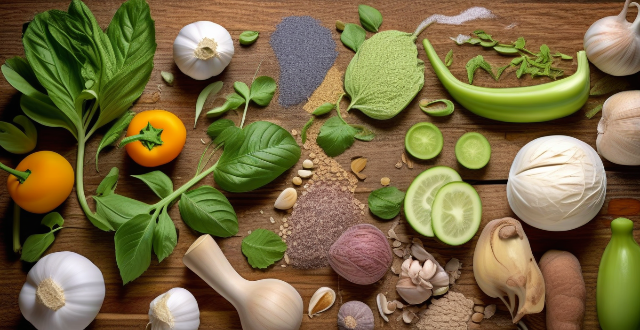
What ingredients are commonly used in Mexican cooking to create its unique flavor profile ?
The article provides an overview of the key ingredients used in Mexican cooking, including chili peppers like ancho, jalapeño, serrano, and habanero; herbs and spices such as cumin, coriander, oregano, and cilantro; and other ingredients like tomatoes, onions, garlic, lime juice, epazote, and hominy. It explains how these ingredients contribute to the distinctive flavor profile of Mexican cuisine and encourages readers to experiment with creating authentic Mexican meals at home.

What are the best ways to explore the diverse cuisine of South America ?
South America is a continent rich in cultural diversity, and this diversity is reflected in its cuisine. Here are some of the best ways to explore the diverse cuisine of South America: 1. Visit local markets and street food stalls for authentic dishes. 2. Take cooking classes to learn how to make traditional dishes. 3. Dine at local restaurants for regional specialties. 4. Attend food festivals for a variety of South American dishes. 5. Travel off the beaten path for unique culinary traditions. 6. Try different cuisines within South America for a well-rounded understanding of the continent's culinary diversity.
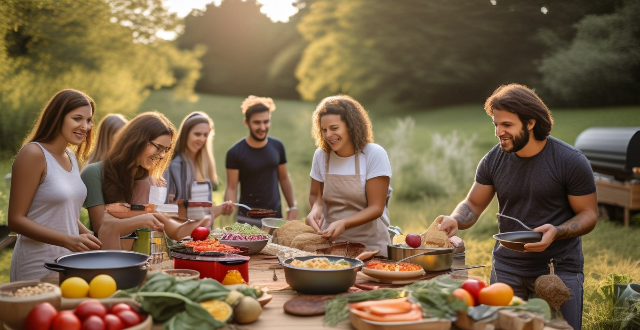
What are the benefits of taking a cooking class while on vacation ?
Taking a cooking class while on vacation offers numerous benefits, including improved culinary skills, cultural immersion, social experiences, personal growth, and health benefits. Learn new techniques and local cuisine, understand traditions, practice language skills, meet new people, build confidence, enhance creativity, incorporate healthy habits, and relieve stress.

How can I reduce the calorie count of my favorite pasta dishes ?
How to reduce the calorie count of your favorite pasta dishes? To reduce the calorie count of your favorite pasta dishes, you can use whole grain pasta, add more vegetables, use low-fat dairy products, reduce the portion size, and use herbs and spices instead of heavy sauces. Whole grain pasta has more fiber than regular pasta, which helps you feel fuller for longer and reduces the number of calories you consume. Adding more vegetables to your pasta dish will not only increase the nutritional value but also help you feel fuller with fewer calories. If your pasta dish includes dairy products like cheese or cream, consider using low-fat versions instead. Reducing the portion size is an obvious but effective way to reduce calorie intake. Using herbs and spices instead of heavy sauces can also reduce the calorie count of your pasta dish. By following these tips, you can enjoy your favorite pasta dishes while maintaining a healthy diet.

How do you describe the taste of authentic Mexican cuisine ?
Mexican cuisine is a vibrant and complex blend of flavors that can be both bold and subtle. Here are some key characteristics that describe the taste of authentic Mexican food: ### Spicy Heat Chili peppers and spices like cumin, oregano, and cinnamon add depth of flavor to many dishes. ### Acidity and Tanginess Lime juice and tomatoes provide refreshing acidity and tanginess, while also contributing sweetness. ### Earthy and Nutty Flavors Beans, corn, and nuts offer earthy undertones and richness to Mexican cooking. ### Sweetness and Fruitiness Fruits such as pineapple and mango, as well as vegetables like sweet potatoes, bring a touch of sweetness to savory dishes. ### Umami Richness Cheese and slow-cooked meats contribute deep, savory flavors to Mexican cuisine. ### Herbaceous Notes Cilantro and epazote provide distinctive, fresh flavors that are essential in traditional cooking. ### Texture Variety Crunchy vegetables and creamy avocado-based sauces offer a range of textures that balance spicier elements. ### Bold and Aromatic Garnishes Onions and cilantro are often used as garnishes, adding sharpness and freshness to dishes. Overall, authentic Mexican cuisine is a harmonious combination of spicy, tangy, sweet, umami, herbaceous, and textural elements that create a complex and satisfying gustatory experience.